May 3
Today is a Sea Day, and we are traveling north to Cochin, India. I have heard much about India but know nothing about what to expect. India recently became the most populated country in the world, at 1. Billon, overtaking China. I know there are a lot of clever people in India, and I hear there is extreme poverty. There is a class system called 'Cast' that is centuries old, giving those at the top extreme wealth, while those at the bottom extreme poverty, trapped into horrid jobs with very little pay and no way to improve themselves.
India gained independence from Great Britain in 1947.
We will be making four stops in India over the next five days. Some guests will be getting off in Cochin, traveling by air to the Taj Mahal over the four days, and flying back to the ship in Mumbai, a total trip of 2,275 miles.
May 4
The ship docked in the port of Cochin. This country requires a full passport inspection of all passengers and crew. Fortunately, we made it through the queue in less than 30 minutes, and we were on the bus for a short tour of Cochin.
Our guide told us India has the hottest weather in living memory. Cochin has a population of 2 million. He told us the Indian dream is to:
- own a British Manson [similar to the ones in the best part of town]
- own a German car
- Have an American salary, and
- Have an Indian wife
He told us Australia drives on the left, America drives on the right, and in India, they drive down the middle. You need a good horn, brakes, and luck to drive safely. That was a joke, but it was not far from the truth as we weaved through the streets, hooting at everything in sight and racing everyone to a small gap ahead. All this on narrow, poorly paved roads. He told us public transport was the main form of travel until COVID-19, but since COVID-19, people prefer cars and scooters, making the narrow roads clogged.
Thankfully, we arrived safely at our first destination, St Francis Church, the oldest European church in India, built by the British. It's a nice church, but it is not worth the effort to get there?
The second stop was the fishing village. The locals demonstrated casting their nets, and we had time to see some colonial British mansions that line the shorefront. They have all since been converted into restaurants and hotels. During our visit, poor merchants constantly pestered and followed us, trying to sell us products.
The third stop was the Dutch Palace Museum, which was built by the Portuguise, occupied by the Dutch Jews, and includes a synagogue and temple next door. It was known as Jew- Town. It is now only a museum.
Hot and sweaty, we were happy to wiggle our way back to the ship.
May 5
We arrived in Mangalore, our second stop in India. Waiting for our tour time, we watched the pilot board the large oil tanker across the dock. He had to climb up a rope ladder about 20 feet to board.
It is not too hard to board a ship in port while the ship is moored, but it is much more dangerous when they board the ship this way out at sea, coming into port.
Exiting the ship was a breeze after being approved by passport control yesterday and given a stamped landing card.
Mangalore dates back to the 15th century. Its population is 600,000. It sits on a natural harbor on two rivers. The guide tells us the soil is very fertile, and most houses have two coconut trees and other fruit trees in the yard. India has selected Mangalore to be a smart city due to its port, airport, rail system, and good road access.
Our first stop was Gokarnath Temple.
The second stop was an Artisan Village. We were given demonstrations on making tools [sycle], pottery, oil extraction from sesame seeds, stone carving, beating rice to make a morning cereal, weaving coconut leaves to make roofing.
The third stop was a very grandiose, 200-year-old family home. A landlord is a person who has hundreds of acres of land. He gives a family the land, and they cultivate crops and give them to the landlords, who sell them and share the money with the tenant.
The fourth stop was Belmont House, a traditional colonial home in the city center of Mangalore with beautiful architecture. It includes 8 bedrooms, lovely gardens, and refreshments.
The last stop was St Aloysius, built in 1882. It is a Catholic church with extensive classrooms made from mud and clay walls. The Chapel contains beautiful stained glass, fresco walls, and ceiling paintings rivaling the Cysteen Chapel in Rome. It is now a college.
We returned to the ship for a late lunch and reflected on all we had seen that day.
May 6
Today, we had a seven-hour excursion called A Taste of Goa. We had to show our stamped papers three times to exit the port.
Goa is India's most popular tourist destination for Indians and foreign travelers. Its population is 47,000. We were told the monsoon season starts very soon, bringing even higher humidity, drenching rains, and high winds.
Historically, rice has been the main crop, but the younger generations refuse to enter farming, so the fields lay fallow - empty. There are many colleges and universities, and India produces very clever professionals, especially doctors.
The Indian population is fixated on becoming white by covering all skin outside or using skin lotions, while Westerners sunbathe to get a sun tan.
Our bus was very old and had poor air conditioning. We endured squeaks and rattled along the very bumpy roads. The driver threw the bus around the twisty roads, but he got us to our destinations safely and on time.
Along the way, we saw this craftsman making chairs alongside the road.
Our first destination was in old-town Goa, St. Francis Basilica, which is made from teak wood with gold leaf. St. Francis was a well-loved monk, but his body did not degrade when he died, no matter how hard they tried. For this, he is celebrated as a saint. His body is displayed in a glass case, but very little is visible, and no photos were permitted.
We watched a group of workers take down one of the massive outside doors.
Later, we came across a workshop where they were repairing several doors by hand. The workers made it clear we were not welcome, but not before I got some photos. This is work I do at home restoring our Queen Anne Victorian home.
The next stop was across the street. Se Cathedral was built to commemorate the victory of the Portuguese under Afonso de Albuquerque over a Muslim army, which led to the capture of the city of Goa in 1510. Since the day of the victory happened to be on the feast of Saint Catherine, the cathedral, a very old church, was dedicated to her.
We next visited Shree Shantadurga Saunsthan Temple, which is a private temple complex belonging to the Goud Saraswat Brahman Samaj located 19 miles from Panaji at the foothill of Kavalem village in Ponda Taluka. Magh Shuddha Panchmi. It was too hot to stay long.
We noticed this lady carrying something on her head.
The next stop was the Nandanvan spice plantation, where we were treated to Indian cuisine for lunch. They toned down the spices for us, and it was delicious.
Then, we were given a tour of the demonstration spices they grow and sell. See list.
Turmeric [which she says is poor man’s saffron]
Cashoo
Cardamom
Banana
Pepper black [king of spices]
Acacia
Allspice - [Jamaican pepper]
Paddy paddy pepper
Basil
Lemon grass [for tea]
Nutmeg
Cinnamon bark
Turmeric
Vanilla [creeper]
Finally, we headed back to the ship, another bone-shaking ride to remind us we were in INDIA.
May 7
We arrived in Mumbai, a large peninsula that was originally seven separate islands, eventually connected by bridges and landfills.
Mumbai has a population of 23 million and is the country's financial capital, including the stock exchange. The country is in the middle of voting, a month-long event for the massive population. The downtown area is definitely an impressive vertical city.
The cruise terminal has been under major upgrade [for the past seven years, with very little progress], so we docked at the cargo dock. Mumbai became a very important port when the Suez Canal opened in 1869.
The original city name under British rule was Bombay, but it was changed to Mumbai in 1995. Everyone still seems to refer to the city as Bombay. Our tour destination was Elephant Island and Elephant Caves. We drove about 20 minutes downtown to the tour boat terminal, where we saw the impressive Monument- 'Gateway to India' Arch.
It is located across from the even more impressive 'Taj Malah Hotel,' which takes curb appeal to a whole new level.
We boarded a tour boat, traveled for one hour, and enjoyed the Bombay skyline from the bay.
A navy boat deliberately cut across in front of our tour boat to give us an uncomfortable bumpy wake. Soon after , the tour boat was stopped by a different navy gunboat with guns drawn.
The captain showed documents, and we were eventually allowed to proceed.
We arrived at Elephant Island, which has a population of 2,000, and discovered there are NO elephants on the island, just one statue of an elephant, which we did not see.
On the pier, we boarded a small train that took us to the base of the mountain.
From there, we were faced with, we wer told, 120 steps to the caves high up the mountain. I did not count them. Merry stayed at the bottom to look at the endless merchant stalls.
One lady accepted the chair ride [for a nice fee].
At the top, many monkeys greeted us, waiting to snatch food or drink from unsuspecting tourists.
When I got to the cave, I discovered it was man-made. It was a Hindu temple built in the 7th century, hand-carved out of solid rock, celebrating the God Sheba.
Exiting the cave, I spotted a cafe and got a Sprite and crisps/potato chips. It was lunchtime, and it would be hours before we returned to the ship.
I carefully returned down the uneven steps and met up with Merry. I bought an ice cream and was suddenly surrounded by monkeys. It was a challenge to eat it without the monkeys stealing it.
We joined the rest of our group and boarded the little train back to the pier. Then, we boarded the tour boat for one hour to land and our waiting cool bus.
Back on the ship, we grabbed something to eat and then collapsed on the bed for a rest. After a few minutes, Merry asked what the schedule was for the next day. I checked and discovered we had an evening tour booked, which started in an hour. We showered and got ready for the evening tour.
The evening tour was entitled Bombay by Night. Our bus took us around the city, viewing the night lights and the extra activity after dark, with the sun gone down and cooler weather in the air. The city certainly took on a different flavor. The beach that was deserted by day was all lit up and crowded. People do not swim or sunbathe. We were told that on a full moon, it is even more crowded.
We stopped at a sports bar for drinks, finger food, and socializing. It was strange to see cricket on the big TVs instead of soccer, football, or baseball. Field Hockey is the national sport, but cricket seems to be everywhere. After an hour of fun, we headed back to the bus.
As we returned to the port, we saw the new cars [left-hand drive] stacked up in the port, ready for export by the thousands.
May 8
Today, we were a small group of seven in a nice minivan. Our mission was to become familiar with how locals live in Mumbai. Our destination was Bandra, an old part of Mumbai, about an hour north of the port.
Our guide took us through the central district, and we viewed the central train station, which services 3.5 million riders per day on overcrowded trains. The station building is a magnificent example of European architecture during British rule.
We saw a new tall building that is owned by one person as his residence. It is as high as a 42-story building but only has 21 floors. It has very tall ceilings and this very odd canter lever shape.
Mumbai has a lot of other European architecture, but as we travel around, the buildings look like they are in disrepair. The guide explained that the owners do not care about curb appeal; the interior matters and most of the interiors are very elaborate. This does not apply to the millions in the city who live in the authorized and unauthorized "slums."
The city is working hard to revitalize itself. Endless new skyscrapers, freeways, overpasses, tunnels, and an elaborate underground rail system are under construction. The city will be a mess for about ten years until the bulk of these projects are finished.
Our first stop was Mount Mary Basilica, patron saint of Bandra and a miraculour pilgrimage center, from the 17th century but rebuilt in 1904.
No photos were permitted inside.
Outside, we met a local family visiting from the slums. A lovely family. I (Merry) spoke with the family and the man was amazed that at my age I would travel so far to visit a place and its people....he was 74, on the end. It was a pleasure to talk to these people.
Stop two was a fort and temple on the banks of the bay, now overshadowed by a brand-new freeway overpass. Our guide explained that a temple is more of a place for the community to meet and get knowledge.
The next stop was walking through old Bali Village. I (Rod) saw the classical-style architecture and very cramped housing, but there was a sense of community and neighborhood.
Next, we visited the open-air market to see all it had to offer, go shopping, and buy food for lunch. It was crowded, and the conditions were concerning healthwise. Goats, sheep, chickens, and horses were mixed around the stalls.
At our last stop, we were invited into Densil and his family's home. This is truly a traditional middle-class family apartment where he raised his family of five in a two-bedroom unit; the second bedroom was also the dining room. We received snacks and drinks while we got to know the family. They provided us with a traditional home-cooked Indian lunch consisting of rice, chicken curry, and other delicious items. They were such nice people, and it was a delight to visit their home.
We had to hustle back to the ship by four o'clock to be finally checked out of India. The officials are famous for being difficult to work with, but luckily, we made it back in just five minutes and got back on the ship without incident.
My final thought on India. It seems to be a country of true indigenous people. While Britain set the country on its feet, since its independence, it has been allowed to develop its identity. During independence, parts were split off to create peace, and Pakistan and Bangladesh came to mind. Outside of the big cities, there are endless small communities with their own languages and dialects. The only way to communicate outside their own area is English, which seems to be taking over as a common language.
There is a lot of poverty and poor working conditions, but they are very industrious, so there is work for everyone. The labor laws are very liberal. Overcrowding is a problem, but the modern trend among the new generations is small families. Crime does not seem to be a problem. There seems to be mutual respect for each other. When we return, we will respect the high standards back home in the USA.
May 9
We loved visiting India but are ready for two sea days to recover and prepare for our next adventures in the Arabian peninsula. During our time in India, we had very little internet access. Just a few minutes when we were traveling from port to port. Now, we are crossing the Arabian Sea and have no internet yet again.
May 10
It's the second sea day, and we are winding down for the end of our 90-day cruise in three days. The big suitcase was brought out, and last-minute laundry started. Ship officials invited us to a special lunch for guests who have been on for a long time and are getting off in Dubai. It was a lovely affair.
There was very little internet access to finish this blog and make travel arrangements. I attended art class while Merry relaxed. We both attended team trivia, the last of the segment. The group of eight stayed long after the trivia was over to sip champagne paid for by Karen and John and wind up our friendship.
In the evening, Janice and Randy arranged a farewell dinner with Eliz, Joe, Kevin, and Margret at the Steakhouse on board. Everyone had a good time, but we missed George and Roxanne, who we will visit next.
The next episode of this blog will take us on to the most exciting part of our journey, so bookmark this page and refresh the page frequently.
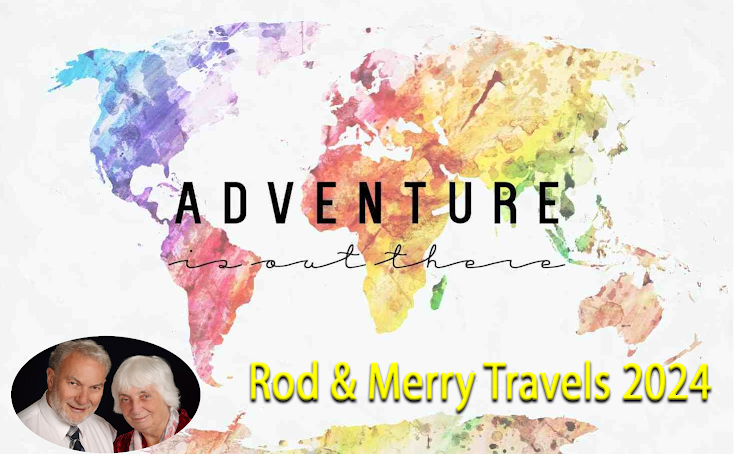


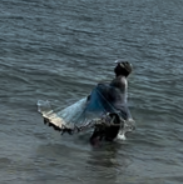

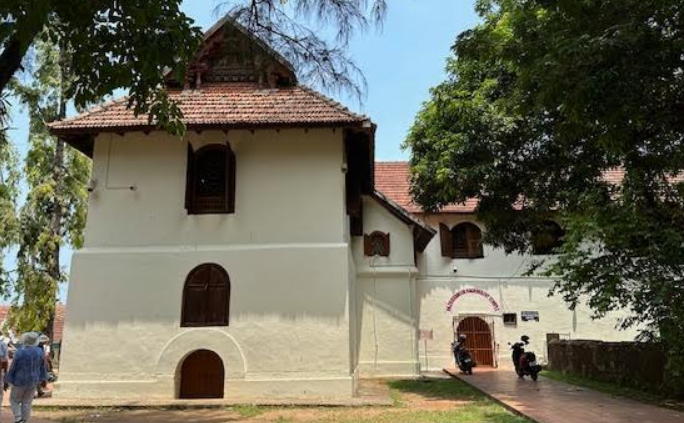





















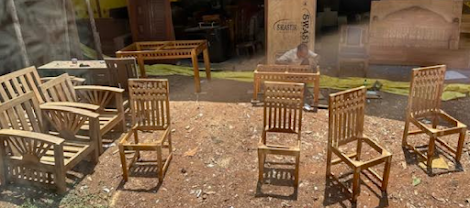
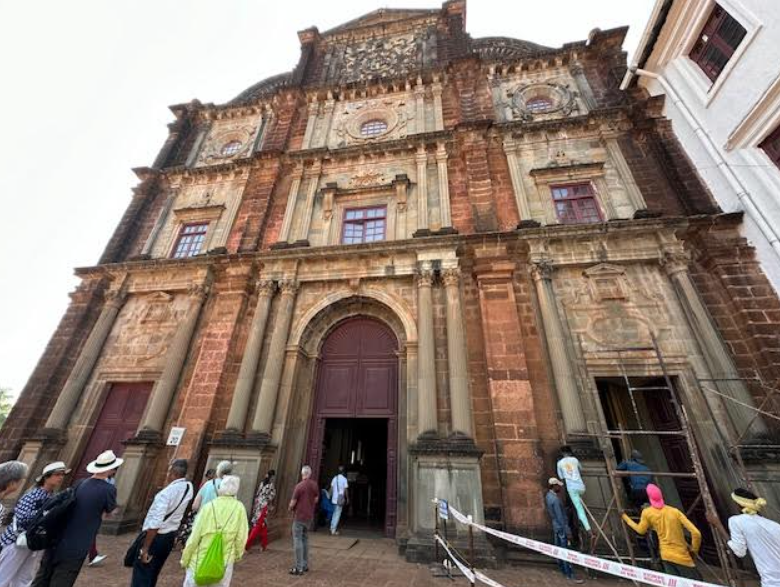


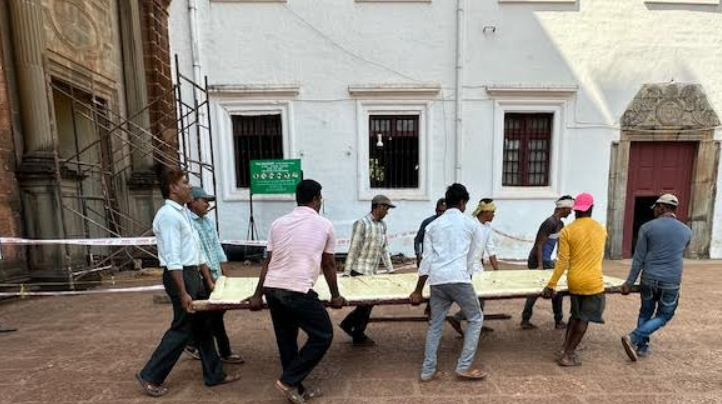




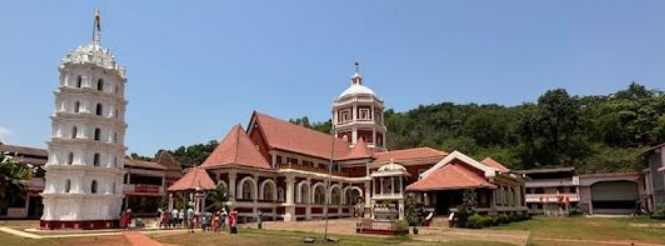







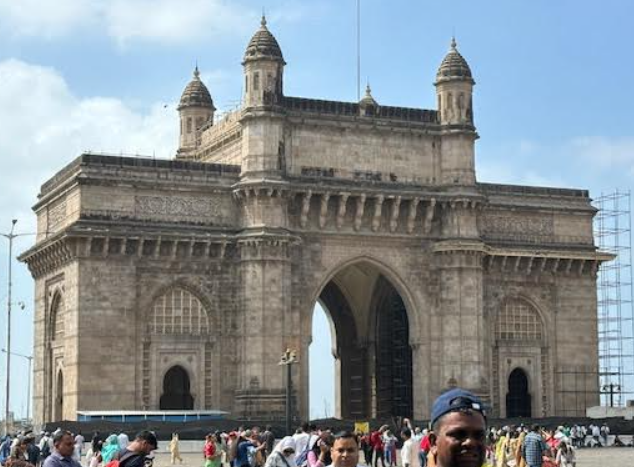













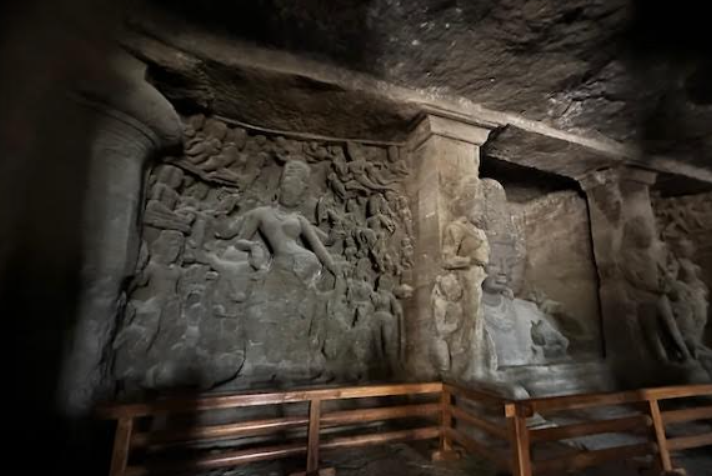






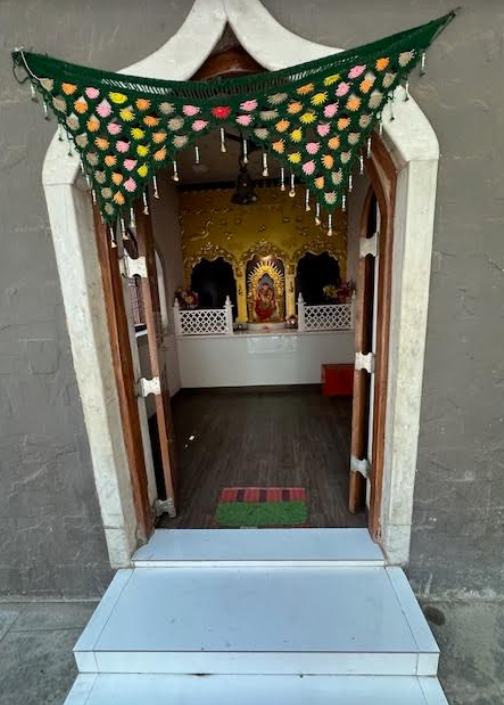


















Your visit to India was so much fun to read.
ReplyDeleteElephant Island should be re-named to "Monkey Island"!!
So glad you and Merry were part of team trivia with Karen and John ,
our friends from home! It's a small world after all!
Thank you for writing your blog - - I so enjoy reading all your trips and the adventures you have. I look forward to reading your next adventure. Safe travels!
Joyce